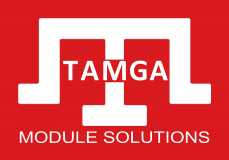Deployable Healthcare for Emergencies and Remote Areas
When disasters strike or medical infrastructure is lacking, field hospitals, field clinics, mobile hospitals, and mobile clinics provide critical care where it’s needed most. These rapidly deployable medical units save lives in war zones, disaster areas, and underserved regions worldwide.
Key Benefits of Mobile Medical Facilities:
- 24-72 hour deployment in emergencies
- Self-contained operations with power/water
- Scalable capacity (10-300+ beds)
- All-terrain adaptability for remote locations
Types of Mobile Medical Units
1. Field Hospitals (Advanced Trauma Care)
- Capacity: 50-300 beds
- Features:
- Surgical theaters
- ICU units
- X-ray/imaging equipment
- Isolation wards
- Used in: Natural disasters, military operations
2. Field Clinics (Primary Care)
- Capacity: 5-20 treatment areas
- Features:
- Basic triage stations
- Vaccination clinics
- Maternal health services
- Used in: Refugee camps, rural outreach
3. Mobile Hospital Vehicles
- Types:
- Truck-mounted expandable units
- Train-based hospital cars
- Shipping container clinics
- Advantage: Relocatable without reassembly
4. Pop-up Mobile Clinics
- Deployment Time: <2 hours
- Best for:
- Temporary testing sites
- Vaccination drives
- Disaster first-response
Essential Components
All effective field hospitals and mobile clinics require:
Medical Infrastructure
- Sterile treatment areas
- Negative pressure isolation
- Pharmacy dispensaries
Support Systems
- Solar-powered electricity
- Water purification
- Climate control
Operational Features
- Telemedicine capabilities
- RFID inventory tracking
- Waste management
Top Use Cases
| Scenario | Solution | Key Requirements |
|---|---|---|
| Earthquake response | Field hospital | Trauma surgery, orthopedics |
| Pandemic outbreak | Mobile testing clinics | PPE storage, lab space |
| Military field ops | Forward surgical units | Ballistic protection |
| Rural healthcare | Truck clinic | 4WD capability |
Innovations Changing Mobile Medicine
- AI Diagnostics – Portable imaging with machine learning
- 3D-Printed Shelters – Rapidly assembled structures
- Drone Medevac – Integrated landing pads
- Blockchain Records – Secure patient data in crises
Deployment Checklist
- Site Assessment
- Terrain evaluation
- Security risks
- Supply chain access
- Regulatory Compliance
- WHO Emergency Guidelines
- Local medical licensing
- Staff Training
- Rapid deployment protocols
- Equipment familiarization
The Future of Emergency Medicine
Next-generation mobile hospitals and clinics will feature:
- Self-deploying inflatable structures
- Nanotech air filtration
- AR-assisted surgery
- Autonomous supply replenishment
